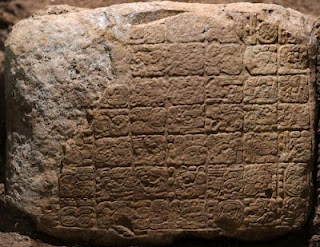The Lodge at Chaa Creek’s resident Mayanist said that recent reports from a noted University of Texas scholar are an important addition to our understanding of the true history of the Maya.
Speaking from Chaa Creek’s Natural History Centre, anthropologist Joe Awe said that he praised Dr David Stuart for an announcement he made June 28 that not only once again debunked Maya 2012 doomsday theories, but offed a unique interpretation of the significance of the December 21 2012 Winter Solstice date.
“Dr Stuart has been a voice of reason throughout the whole Maya 2012 debate, and his latest announcement strikes another blow for common sense,” Mr Awe said.
Dr Stuart is a University of Texas professor of Mesoamerican art and writing and one of the world’s leading authorities on the ancient Maya. As a specialist in ancient hieroglyphs, he is often sought to provide expert analysis of ancient Maya glyphs, the written symbols that constituted their extensive written language. Dr Stuart is also an expert on interpreting the Maya Long Count calendar.
Working from the La Corona archaeological site in northwest Guatemala, Dr Stuart said he and his research team deciphered the meaning of a series of glyphs carved on an ancient stela, or stone monument that makes reference to the now famous –or infamous – December 21, 2012 date.
And rather than an apocalyptic prediction of the end of the world, it seems to be a bit of political spin on the part of a beleaguered ancient Maya ruler.
As the project team’s leader, Marcello Canuto, director of Tulane’s Middle American Research Institute, put it, “What this … shows us is that in times of crisis, the ancient Maya used their calendar to promote continuity and stability rather than predict apocalypse.”
Dr Stuart said that the 56 carved glyphs he examined were part of a record of La Corona’s political history, and revealed another, more political use of the December 21 2012 date.
“The monument commemorated a royal visit to La Corona in the year 696 by the most powerful Maya ruler of that time, a few months after his defeat by a long-standing rival in AD 695,” he said.
“Thought by scholars to have been killed in this battle, this ruler was visiting allies and allaying their fears after his defeat. It was a time of great political turmoil in the Maya region, and this king felt compelled to allude to a larger cycle of time that happens to end in 2012,” Dr Stuart wrote.
“Like most Maya scholars, Dr Stuart takes the view that the end of the 13th Bak’tun on December 21 2012 leads to the beginning of a new calendar cycle, not the end of the world,” Mr Awe said. Here at Chaa Creek, which is in the very heartland of the Maya, we have always promoted the Maya history over Maya myth, so Dr Stuart’s newest findings are very welcome,” Mr Awe said.
